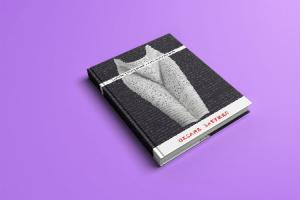The set includes:
32 word cards
instructions
Throughout life, people accumulate many visual images in their memory. When these images come to life, they give rise to a variety of feelings; meeting them is a meeting with oneself in various life...
The set includes:
80 cards with images (photos)
32 word cards
instructions
The set includes photographs depicting highways, highways, roads, paths and completely off-road terrain. In addition, it contains small cards with words and phrases. All this is a tool for the work of a practical psychologist, called metaphorical maps. Cards can be used in counseling, psychotherapy, coaching, in group and individual work with children and adults.
Details about the rules, strategies and techniques for using metaphorical cards in the work of a psychologist are written in the book by G. Katz, E. Mukhamatulina “Metaphorical cards. A guide for a psychologist”, here we will briefly describe the possibilities and basic rules of work. How do metaphorical cards work? Why do we love them?
Throughout life, people accumulate many visual images in their memory. When these images come to life, they give rise to a variety of feelings; meeting them is a meeting with oneself in various life planes: temporal (in the past and present, in the imaginary future), emotional (happiness-love-sorrow), interpersonal. In an implicit form, metaphorical cards contain many messages that reflect the subconscious intentions and values of the person viewing them, and the same picture carries different meanings for different people. When a person does not talk about himself directly, but turns to visual images, he is less defensive; the cards open up a non-trivial perspective for him to analyze life.
“Roads and Roads” is a new original set of “dynamic” cards that makes it possible to work with images of movement, aspiration, speed, goal achievement, prohibitions and ideals. Its most productive use is in situations when the client is experiencing a crisis, faces the need to make a choice, begins some kind of activity, formulates new goals, etc. We are accustomed to think of life as a path, and pictures associated with the road resonate with experiences in each of us. There are many images associated with the road: braking, sudden stops, dangerous turns, meetings and partings, choosing a path, fellow travelers, separation from parents, growing up, gaining independence...
Despite their remarkable features, metaphorical cards are not a medicine, but a tool for research and psychotherapy. They don't provide answers on their own, but they help ask meaningful, relevant questions.
The psychological meaning of working with cards is that a person expresses his attitude to the image on the map, analyzes the associations that arise, and correlates them with actualizing experiences and memories. Cards can be selected either randomly (having the opportunity to look at the images) or blindly (pulling them out at random). You can also correlate images with verbal material: give the picture a name arbitrarily or find a suitable card with a word from those available in the set.
Any path is just one of a million possible paths. Therefore, a warrior must always remember that the path is only a path; if he feels that it is not to his liking, he must leave it at any cost. Any path must be looked at directly and without hesitation. (Carlos Castaneda)
The road resembles our life, life is a constant movement and everyone has their own, just like the road.
Bridge. Sergey, 35 years old. He chooses a picture with a road that reminds him of his own life at the moment.Beautiful forged fences remind of restrictions, rules, unshakable dogmas - cold, hard, clear. But at the same time they are beautiful! It attracts and gives you a feeling of the correctness of what is happening to you. It also resembles parental attitudes. “Be the best, be the first! Strive to take your place, because there are competitors around who are just waiting for your mistake.” Only straight forward movement according to the rules, no prospects ahead. There is a feeling of looming problems. And somewhere beyond the limitations there is another unfamiliar but beautiful life, disordered but attractive.
I am used to always being the first - I drew best and performed at festivals in kindergarten, took first place in competitions at a sports school, passed final exams best of all in the class... Now I work in a very prestigious company and am already approaching the highest level career ladder. My parents are proud of me. My father always emphasized that I have excellent heredity and excellent abilities, that I have no right to vegetate and be dull. Now I doubt the correctness of his words. In fact, I’m sick of my job, I’m tired and I want to be just an ordinary person - allow myself to give up what I don’t want to do, make mistakes, sometimes relax and just do nothing. I'm tired of pretending that I'm the best.
And if you could choose your path, what would it look like?Winding, uneven, there are many obstacles on the way, high and frightening from afar. But she deftly goes around them, stripes of bright light and shadow fall on the road. The road winds and tends upward and it is noticeable that behind the forest something new, bright, and interesting awaits. Yes, I would like to live as if no one expects me to become successful, influential... (thinks). Maybe then I would like it myself?
| metelica-online.ru |
Website - Orenburg down scarves Down webs Down stoles Scarves Handmade! Masterpieces of folk art. We send by mail! Shipping by mail with prepayment or cash on delivery with payment upon receipt.
|
|

My life now is moving along a cliff - you stumble and that’s it. And there is no other way, nothing depends on me. I’m walking, carrying my luggage like a donkey. And I feel danger all the time - life is dangerous, people are evil, I’m afraid that if I get close to my fellow travelers, they will push me over. Simply because it's easy to do. Ahead I see that the road goes down, and this is logical! Going up is scary, but falling down is not so painful. As a child, it was always instilled in me: “If you stumble once, choose the wrong decision, and that’s it, life will go downhill, you won’t get out.” Take care of your honor from a young age. The word is not a sparrow - you won’t catch it if it flies out.” And a meaningful look that says, “If you do it your own way, you’ll probably be wrong!”
 ,
,
I like this picture.
The snow is so sparkling and clean. It’s difficult to move my legs, but at least I can choose where to make my own path, it’s only mine! There is no one nearby, and I feel calm, because no one evaluates, no one points out and (pause) no one betrays me.

I hate my job. This picture is probably closer to me than others. It is black and white, joyless, summer is long behind us, and ahead there is only cold and slush. And I, just as lonely, stand and don’t know what to choose. Should I leave my old job, where I feel like a small cog in a huge, ruthless machine? I feel like I can't cope, I forget to do things that are important, I miss details, I get scolded... I hate everything. And in the morning I go to work again. Or should I choose another? Just recently I was offered a position in a related field, but there I will have to lead and take responsibility for others. They think that I can handle it, but I don’t feel strong enough, and the management has never seduced me. It's hard for me to choose. The very need to make a decision oppresses me.
What road inspires you, where would you like to be?
This is where I really want to be. This is such a fruitful time, there are so many opportunities! You can collect beautiful bouquets of colorful leaves, you can walk holding hands. It is impossible to walk along such a road and not meet anyone, someone close, dear, someone with whom you can pick mushrooms together, drink tea with viburnum jam. Do you know that viburnum has heart-shaped seeds? The children grew up and went into independent life. My husband and I are divorced. I miss warmth, a person who would be nearby, with whom I could share my life. Now I understand that there is no importance in choosing a job, I feel bad that I am lonely. But if I decide to change jobs, then I will let changes into my life, a new team, new people...
The beginning of therapy is an opportunity to change your beaten path, choose a new direction, and this requires a pause, time to comprehend, to talk through what is happening, what you would like to bring into your life. Metaphor can be different, but it always helps to start a dialogue.
Metaphors of the life path in the texts of patients with schizophrenia // Thinking and speech: approaches, problems, solutions: Materials of the XV International Readings in Memory of L.S. Vygotsky. - 2014. - T2.
Metaphors of life's journey in texts of patients with schizophrenia
M.E. Pilipenko Institute of Psychology named after. L.S.Vygotsky Russian State University for the Humanities Russia, Moscow
Introduction
A person’s life path is a certain constant value, constantly present in his existence and, however, changing with each moment of time. This is a generalization of a person’s entire life at a higher level than the idea of the past, present and future. The life path is an integral image of the entire subjectively experienced biography of an individual. And, since this concept is a kind of merged image, in our research we used text analysis, or, more precisely, metaphors, to reveal it. Metaphor allows you to reflect the fullness of ideas about the path of life in a short and succinct form, conveying through semantic transfer the main content of a person’s life path.
The object of the study is ideas about a person’s life path. The subject is a person’s life path, presented in the form of metaphors and studied through the method of questionnaires and analysis of autobiographical texts compiled by patients with schizophrenia. The goal is to find the features of ideas about the own life path of patients with schizophrenia.
Hypotheses:
- In patients with schizophrenia, the external locus of control will predominate.
- Having an external locus of control will be positively correlated with certain aspects of self-attitude.
- When writing autobiographical texts, metaphors will be used as a reflection of the picture of the world of patients.
- Patients will use a large number of non-agent constructions, which is associated with the general externality of patients.
- It is also possible that there is no indication of the future due to the patient’s awareness of the presence of a mental illness.
- The texts will contain an indication of the manifestation of the disease as a turning point in the life of patients.
- The texts will be of a mechanical nature, i.e. they will list life events without indicating the relationship to them.
- Patients will use one text figure - their personality, and will also not use identification with other people, since they are not capable of changing positions.
Research objectives: identify the basic concepts used in the study; describe the methods used and the experiment developed by the authors; determine the study sample; carry out selected methods on a sample; analyze and interpret the results obtained.
About the problem of the life path of an individual in psychology The problem of determining and studying the life path of an individual is one of the least developed in modern psychological science and practice. Until now, no generally accepted definition of this concept has been introduced; each author has his own understanding of the meaning and phenomenology of the life path. The understanding of this construct closest to the goals and objectives of research is that of Sergei Leonidovich Rubinstein.
The author believed that the process of unfolding a person’s life path is, first of all, a dynamic process that lasts over time. Throughout life, various events occur that influence the personality of the person with whom they occur. Thus, the formation of personality and its self-awareness occurs in the process of a person’s life and under the direct influence of what is happening. That is, the phenomenon of self-awareness is inextricably linked with the phenomenon of the life path. It is the individual history that distinguishes one person from another, as the author believed.
He views the life path not as a chain of fragmentary actions and events, but as a continuous holistic process. As a result of the unfolding of this process, we observe a formed personality, which is impossible to consider in isolation, since qualitative changes occur over time and are associated with historical moments of life.
experimental part
Description of the sample.
the sample consists of 14 patients diagnosed with schizophrenia. Two forms were considered: simple and paranoid, since these forms are the most common and presented in a psychiatric clinic. Among the patients, gender distribution: 7 men and 7 women. By form: 6 patients with paranoid and 8 with simple form.
age of subjects: from 24 to 67 years. Average age of subjects: 43.8 years.
Methods used.
- Self-attitude questionnaire (V.V. Stolin, S.R. Panteleev).
- Questionnaire “Level of Subjective Control” (J. Rotter). A research version of the questionnaire with a differentiated rating scale was used.
- Methodology "Autobiography". The technique is aimed at studying a person’s individual self-awareness and his life path. It is valuable because it allows one to evaluate the mental content of the subject’s “I” in his own terms and concepts. For this purpose, the most open instructions were used.
Instructions: “Write your autobiography. It can be in any shape and any volume.” To write, the subject was presented with a blank A4 sheet of paper. The procedure takes 10–15 minutes.
Processing the results.
To process the data based on the results of the questionnaires, correlation analysis using the Pearson criterion was used.
To process the data from autobiographies, we used the analysis method proposed by Candidate of Psychological Sciences M.V. Novikova–Grund. It consists of analyzing the reflection of the subject’s internal picture of the world in his texts. For processing M.V. Novikova-Grund, based on empirical research, identified 16 parameters that make up an individual map of a person’s picture of the world.
Standard list of text parameters:
1. Agent structures (Ag.); 2. Non-agent designs (nAg); 3. External predicates (Ex); 4. Internal predicates (In); 5. Past tense (P); 6. Present tense (Pr); 7. Future tense (F); 8. Absolute time (A); 9. Number of figures (Nf); 10–14. Levels of self-identification (Zon A–E). The parameter is correlated with the degree of identification of the speaker with those about whom he is talking; 15–16. Plot (SJ). It is represented by two types - macrocircuit (external organization of events) and microcircuit (events are organized by an internal factor).
Quantitative calculation of parameters is a scheme of 1 and 0, 1 - if the parameter is present in the text, 0 - if it is absent. Based on the results, the prevailing value for a given sample is calculated - the presence or absence of this parameter is typical for it. If more than 70% of the sample have the same value for this parameter, it is considered frequently used and therefore characteristic of the patients being studied.
results
Of greatest interest for the study are the correlations between the two questionnaires used.
- General externality is positively correlated with the expectation of negative attitudes from others (.595). That is, in a situation of negative interaction experience, patients attribute the blame to their communication partners.
- The expectation of a negative attitude towards oneself correlates with externality in the domain of failures (.546).
- In addition, a positive correlation can be observed between externality in the field of industrial relations and self-interest (.606) in this sample. Responsibility in professional interaction rests rather with the communication partner, however, the tendency towards self-interest is high in the patients studied.
- With a negative expectation of attitude from others, patients with schizophrenia still tend to show self-interest. Those. their own inner world is interesting to them, but the world of other people is negatively colored, as are the expectations from interaction with it.
- A low degree of self-esteem was revealed, which indicates the tendency of these subjects to belittle their own merits and, in general, to attribute the results of actions to others or the situation, and not to themselves.
Results of the analysis of patients' autobiographies.
The subjects almost do not use the zA–E parameters (21% use them), which indicates that it is difficult for them to take the position of another person and analyze his experiences.
In the texts of patients, as a rule, there is only one figure - the patient himself (64%). This correlates with the inaccessibility of the inner world of other people to patients - for them only their own experiences are relevant in their life space, which is associated with high scores on the self-interest scale and low scores on the scale of expected attitude of others.
A large number of non-agency constructions in the texts of the subjects (79%) may indicate the connection of this parameter with the general externality of the personality - responsibility for the events that occur is assigned to external factors (circumstances, chance or other people), and not to oneself.
Patients mainly use the past and present tense. Not a single subject used the future tense in his biography. This can be explained by the presence of painful experiences about their condition - patients state their own disorder. Almost the entire sample (93%) noted the onset of the disease as a certain starting point or turning point, after which life events changed their course. Thus, subjects avoid predicting their own future, possibly due to the presence of a disease.
There is a predominant use by patients with schizophrenia of macro-schemes constructed according to the type of organization of external, directly observable events (93%). This construction excludes the description of the personal experiences of the subjects and, accordingly, allows us to believe that it is also used due to the inaccessibility of internal deep experiences to one’s own consciousness. That is, patients with schizophrenia not only have no access to the world of other people, but they also experience difficulty in contacting their own world, although they show interest in it (judging by the results of the questionnaire).
Biographies are quite mechanical - as a rule, they are a list of externally observable “key” life events, such as entering school or college, marriage, etc. Example from the biography (female patient, 51 years old): “Graduated from the Mechanical Engineering College. She worked at 12 production plants as an engineer. The work environment was tense. She got married and gave birth to a daughter. After this, my friends turned their backs on me. I got sick." Most often, the description of events does not contain an indication of the author’s attitude towards them and the degree of his responsibility for what happened, which, again, correlates with the high degree of externality of the patients. Example (female patient, 35 years old): “I was born in 1979. My parents took me to kindergarten. I went to school near my house. Entered the University. I studied well. She worked in her specialty for 3 years. I got sick. I’m still sick.”
An interesting fact is that some subjects indicate an event that served as a turning point for the manifestation - this is the death of one of the patient’s relatives or friends. This fact may require further study.
Conclusions.
- The sample is dominated by subjects with an external locus of control, which is combined with their use of non-agent constructions that deny the responsibility of the respondent for the events that happen to him. This is especially true in the sphere of failures - the blame for them is attributed to external factors, and not to one’s own efforts. Patients are also not inclined to expect other people to treat them positively; they place the blame for unsuccessful interactions on their communication partners.
- A high interest of patients in their own personality was also revealed, which is associated with their egocentric position. It is expressed in the use by patients of only one figure in the text. Despite the poor representation of the personality of the patients themselves in autobiographies, they show interest in it, however, perhaps they cannot fully understand their own experiences, which is manifested in the mechanistic description of events, i.e. without indicating the relationship to them.
- In describing their biography, patients do not use the method of identifying their own experiences with the experiences of other people due to the inaccessibility of someone else's inner world. That is, despite the fact that in the biographies of the studied patients only their personality is presented, it is not described by the patients, but is present only as a nominal character with whom events occur, i.e. there is no indication of the patient’s attitude towards the event - whether it is positive, negative or ambivalent for him. The personalities of those around them are not represented at all. Perhaps this is also due to the fact that in patients with schizophrenia, negative expectations of attitude from others prevail.
- Based on the results obtained, we can say that the research hypotheses were, in general, confirmed. The hypothesis that patients use metaphors to reflect their own picture of the world was not confirmed.
“I really liked the game! The cards are large and thick, I think they will last us a long time. We play with the whole family: at first it was a little difficult, but then you get the hang of it and the speed game begins. My husband and I, as adults, did not have any advantages; it seemed that my daughter found the right combinations even faster. We also have a neuropsychological game “Try Again”, we decided to combine them, because... puzzle cards, which are designed to make the game more difficult, are very similar to the cards from Try Again. Now we play like this: we select in advance simple cards from “Try again” with poses that can actually be repeated. Then we shuffle and open one card from the “brain puzzle” deck, remember it, and then put it face down. Whoever finds the correct combination must repeat the pose from the closed card and shout “To the dacha.” If the pose is correct, then you can take the combination and open a new card from the “brain puzzle” deck; if it is not correct, then the participant can try again after one of the opponents tries to take the combination.”
all reviews
“My children really liked the book (Part 1). They listened with pleasure and asked many questions. After each chapter there are exercises that become more difficult from chapter to chapter. Therefore, it is better to read the book not before bed, but to reserve time for an interesting dialogue with the children. The exercises are designed in such a way that they give parents and children room for creativity, depending on the specific situation. My children especially enjoyed drawing their portraits, filling houses with kindness, generosity, etc. After the section on perception, we had fun and began to come up with our own exercises for the 5 senses. The children also enjoyed acting out a fairy tale involving 4 types of temperament. Perhaps the most favorite game for learning about yourself and your character. We improved it a little, added several qualities that were not proposed by the author. For example, honesty, cunning, self-esteem. Each of us filled out 4 sheets - 1 about ourselves and 3 other family members. While they filled it out, they talked, clarified, explained, clarified, depicted and even laughed. My children love such tasks where they can learn more about themselves, show another their portrait and see themselves through the eyes of another. They remember such moments and ask them to repeat them from time to time. By the way, when you decide to do such a thing with your children, do not forget to write the name and date on each sheet. Everything changes. Save these leaves. After a while, you can return to them, do them again and see what changes and what remains the same. I am very glad that the author decided to make a continuation of the 1st part of Psychology for Kids. The children are looking forward to the new adventures of Yulia and her dad. There is little children's literature on the market aimed at understanding oneself and one's inner world. There are even fewer quality publications. The fairy tale about the most soulful science by Igor Vachkov is based on the best achievements of psychological science in recent years, written in simple language and essentially invites children and adults on an exciting journey. A journey that works for the development of children and adults. I am happy to recommend active reading to parents, teachers and anyone interested in the development of a child’s personality.”
all reviews
“I looked at the topics of the authors’ candidate dissertations, they are very far from the practice of preschool education. It seems that all the work is based on inferences, and not on the results of scientific research. All information has long been known to scientists working on this problem. Philological authors are completely unaware of psychological and pedagogical research in this area, and there are quite a lot of them. The content of the work resembles a bachelor's or master's degree in pedagogical education, philological education is manifested in places. That's all. Thanks to the authors for their abstract work.”
all reviews
“A wonderful program for developing children's emotional intelligence. I am an educational psychologist and have worked in kindergartens for 14 years. I worked with children using various good programs. For the last 2 years I have been studying with senior and preparatory groups in the Life Skills program. It differs from other programs in that the theoretical basis is very well written, all practical tasks are tied to theory, and many explanations are given on what, why and how to do. There are some simple and some very difficult tasks. It seems that children cannot cope with them. But no, they cope. And the kids really like it.”
all reviews
“Great metaphorical cards! The structure is unusual: the deck consists of 31 sets of photographs (each set contains 3 cards). You can work both with sets (instructions will come to the rescue) and with individual cards (according to the standard principle). There are a lot of possibilities for using the deck! The quality of the cards themselves is also very good. Thank you to the publisher for continuing to look for something new in the world of metaphorical maps!”
all reviews
“The sets are so-so. It’s an old model, in some places with drawings from the 2007 calendar, but the poster with emotions is generally useful and has valuable quotes. For example, the Bill of Individual Rights. But it’s easier to find them yourself on the Internet, order a print from a printing house, than to overpay for delivery.”
all reviews
“I am a child psychologist, I worked in a kindergarten for 12 years. During this time, I taught group classes in various programs, including this one. I think this is a GREAT program. It’s interesting for children, and it’s interesting for a psychologist to work and see what happens, how children change. I highly recommend it, despite the fact that there are many other good programs now. The only thing is that there should be a maximum of 6-7 people in the subgroup for everything to work.”
all reviews
“I express my gratitude to the author for the depth of consideration of the issue. After reading the book, superstitions about what is given to some children and not to others disappear. An understanding of the process of literacy formation emerges. In fact, the book gives: 1. An understanding of how literacy is formed in different children. 2. A simple step-by-step literacy tool. Regards, Mikhail."
all reviews
“A book for thinking teachers and responsible parents. Helps to better understand the origins of problems. It is written in good language, the author presents specific material in an accessible and engaging manner. I teach a foreign language, but even for me the book turned out to be useful in terms of methodology and psychological aspects.”
all reviews
“Hello! I want to say thank you for the program “A Year Before School: From A to Z.” I work as an educational psychologist and last school year I led a group on psychological preparation of children for school. This year I am faced with a similar task, but unfortunately, online stores, including yours, do not have workbooks for this program. Are there any plans to publish this product in the near future?”
all reviews
“The second deck - and even greater delight :) I was waiting for the release for almost a year, after purchasing the deck “about you”. And for good reason!!! This is another masterpiece by Irina Logacheva and a team of psychologists. Of my 25 decks, these two are the most :) Very interesting images, stories...and the artist’s work is simply magnificent. Yesterday I tried it at work - it was a real pleasure, and the same positive customer reviews about the deck. Beauty and professionalism!”
all reviews
“I recently purchased a kit for working with preschoolers. The emphasis in this game is on the development of fine motor skills and the cognitive sphere of the child. The manual is very detailed, with illustrations. Parents and children can easily play this game at home. I especially want to praise the card: it depicts a lot of characters, and therefore it will definitely not go unnoticed by children.”
all reviews
“Thank you for these cards. This kit is one of the most used in my work with clients in many areas, from initial consultation to corrective developmental activities. Moreover, it is interesting and effective to use these cards in prevention.”
all reviews
“Great book. Many thanks to Inna Sergeevna for the work with which she illuminated the difficult life of children in the orphanage walls. The book changed my view not only of disadvantaged children, but also helped me find an approach to my own. ”
The path is not just movement in time and space, it is a symbol denoting change. The concept of “life path” is a metaphor that inextricably links the duration of time with the duration of space. The idea of this connection is present in physics (thermodynamics, theory of relativity), in philosophy (Heidegger, Husserl, the concept of historicity), in literary criticism (Bakhtin). The metaphor of life as a journey is conceptual for European culture: the correspondence between life and path is stable and fixed in the linguistic and cultural tradition of society; it is not even perceived as a metaphor, which confirms its universality and conventionality. The association of life with a path is reflected in many linguistic constructions (for example, “there were several turning points in his life”, “living life is not a field to cross”), it is built into the European’s cognitive ideas about the world and structures his thinking.
The meaning of the image of a path in art, especially in fiction, is always more than just the framing of a story; it has a psychological dimension, reflecting the intrapersonal vicissitudes of the characters. The connection between time and space is the main subject of research by M. M. Bakhtin, whose work made a significant contribution to the field of psychotherapy. He introduced the concept of chronotope - the interconnection of inextricable temporal and spatial relationships, artistically mastered in literature. In the literary and artistic chronotope, “time thickens, becomes denser, becomes artistically visible; space is intensified, drawn into
movement of time, plot, history. Signs of time are revealed in space, and space is comprehended and measured by time.” Bakhtin identifies the functions that the chronotope performs in the novel.
The chronotope itself determines the genre and genre varieties of a work of art; as a formal-content category, it largely determines the image of a person in literature. One can assume the generative role of this thought in relation to the provisions of the narrative approach, which asserts the presence of genres in narratives that define the main characteristics and limitations of the plot, circumstances, hero and outcome of a person’s life story.
The chronotope of the road is always connected with the personal development of the hero. “The novel is primarily characterized by the merging of a person’s life path (at its main turning points) with his real spatial path-road, that is, with wanderings. (...) The implementation of the metaphor of life’s path in different variations plays a big role in all types of folklore. It can be said directly that the road in folklore is never just a road, but always either all or part of the path of life; choosing a road is choosing a life path; a crossroads is always a turning point in the life of a folkloric person; leaving your home on the road and returning to your homeland - usually age stages of life (a young man leaves, a husband returns); road signs - signs of fate, etc. That’s why the novel’s chronotope of the road is so specific, organic, and so deeply imbued with folklore motifs.”
The chronotope of the road serves as a concentrated social space for the hero. “The road” is the predominant place for random meetings. On the road (“high road”), the spatial and temporal paths of the most diverse people intersect at one temporal and spatial point - representatives of all classes, conditions, religions, nationalities, ages. Here those who are normally separated by social hierarchy and spatial distance can meet by chance; here any contrasts can arise, different destinies can collide and intertwine. Here the spatial and temporal series of human destinies and lives are uniquely combined, complicated and concretized by the social distances that are overcome here. This is the starting point and the place where events take place. Here time seems to flow into space and flows through it (forming roads),
hence such a rich metaphorization of the path-road: “life path”, “take a new road”, “historical path”, etc.; The metaphorization of the road is diverse and multifaceted, but the main core is the passage of time.”
We find the same analogy of path and life among researchers of other forms of art. So, for example, W. Bischoff, when analyzing the paintings of E. Munch, writes that for this artist the structure of space is a metaphor for the events occurring in the inner world of the hero. “The two paintings - Snowy Road and Roadkill - convincingly demonstrate Munch's characteristic ability to combine landscape and figures into a coherent whole. Munch’s landscape is tuned to convey human essence: the artist’s visual idiom transformed landscape scenes into landscapes of the soul.” However, this is not an individual feature of Munch: landscape is a traditional tool of “psychological description” in European culture, allowing one to externalize the inner experiences of the hero and/or the author of the picture. Here we can recall, for example, “Prisoners’ Walk” by Van Gogh or “The Knight at the Crossroads” by Vasnetsov. In addition, there are certain plots and “routes” that are widespread in painting and have deep cultural and personal significance for both the artist and the viewer - for example, the path from Bethlehem to Jerusalem or the road to Calvary, associated with the development of more than just the individual story of the hero , but with the background of the entire Christian world, with ideas about sins and atonement for sins, the need for responsibility for actions taken and a certain degree of authorship of one’s life in the sense of making choices and accepting the consequences of these choices.
Returning to the theme of the road: in cinema there is sometimes a separate genre of “road movie”, implying a plot about the journey of heroes and their overcoming certain trials, which are often followed by a change in the values, actions and attitude of the heroes, but which can also end with the death of the hero or open, with an uncertain ending.
There are many films in which the road is a plot-forming image, a connecting link between episodes, for example: “Rain Man” by Barry Levinson, “Knockin’ on Heaven’s Door” by Thomas Young, “The Road” by Federico Fellini, etc.
Thus, in art, the chronotope of the road organizes the main plot, reflects the changes of the hero and serves as a social space for him. Due to its familiarity and conventionality, the road is internalized, moves into the internal plane, and from there continues to form a plot and perform other functions - no longer in the life of the hero, but of the reader.
M. Kundera writes in the novel “Immortality”: “Before disappearing from the landscape, roads disappeared from the human soul; he stopped dreaming about walking, about hiking and getting joy from it. He already saw his life not as a road, but as a highway: as a line that leads from point to point, from the rank of captain to the rank of general, from the role of wife to the role of widow. Life time became for him a real obstacle that must be overcome at greater and greater speeds.” The metaphorical nature of the road, on the one hand, intensifies, since this road goes into the internal plane; on the other hand, on the contrary, it is lost, since we are even talking about real roads.
It seems appropriate to present here the typology of the development of real space proposed by the architect M. R. Savchenko. This is a model of progression through a suite of rooms, however, it seems that it can be quite convincingly translated into the perspective of mastering the temporary and psychological space of life, and the types described can reflect the picture of mastering not only space, but also experience as a whole, which echoes the idea of plot-forming chronotope functions.
To describe the space, Savchenko introduces the image of a suite of rooms with side doors leading to other rooms. When a subject finds himself in this enfilade, his movement strategy is described by four indicators: the number of rooms traversed (volume); number of repeated hits in the same room (memory); number of adjacent doors passed (opportunities); the length of the entire route, in each room the distance from entrance to exit (duration). In each movement strategy, one parameter becomes the leading one, and one of the remaining ones is minimized, thus, four strategies with three tactics inside each are identified.
Wanderer strategy: the desire to go through as many rooms as possible and visit everywhere. Tactics: a) minimizing repetitions, striving to reach new places (pioneer); b) minimizing opportunities, limiting the number of doors passed, moving only forward, searching for dead-end rooms, exploring the most inaccessible places; c) minimizing duration: mastering the maximum of the most quickly accessible places. “The Wanderer” resembles a person who is constantly looking for impressions and chasing novelty, avoiding a deep presence in ordinary, “non-new” reality.
Guest strategy: the desire to consolidate “ownership” of those rooms where the person has already been. Tactics: a) desire for dead-end situations (homebody); b) the desire to minimize time costs (“faster”); c) minimizing the spaces traversed (“shorter”). The “guest” strives for stability to the point of monotony, recreates situations “as always”, constancy and predictability are important to him.
Owner's strategy: maximizing the possibilities of space, i.e. the number of mastered doors. Tactics: a) increasing the ability to “quickly”; b) increasing the possibility of “shorter”; c) increasing the possibility of “newer”. The main goal is to get to a place from where you can get to many other places, i.e., to acquire the maximum of available opportunities.
Connoisseur strategy: maximizing the duration of appropriation; it is not the space that is valued, but the very fact of being in it. Tactics: a) minimizing the spaces covered; b) minimizing new spaces; c) minimizing potentially rich spaces. That is, it is an orientation toward avoiding expanding experience and enjoying what is available without trying to increase the number of opportunities, impressions, or even repetitions.
Despite the fact that this classification is taken from a study on environmental psychology, it seems interesting and adequate when discussing the topic of a person mastering his life path. The style of movement can be correlated with the internal processes of the individual in the aspect of mastering experience. The metaphorical nature of spatial movement and human life-creative strategies is obvious.








